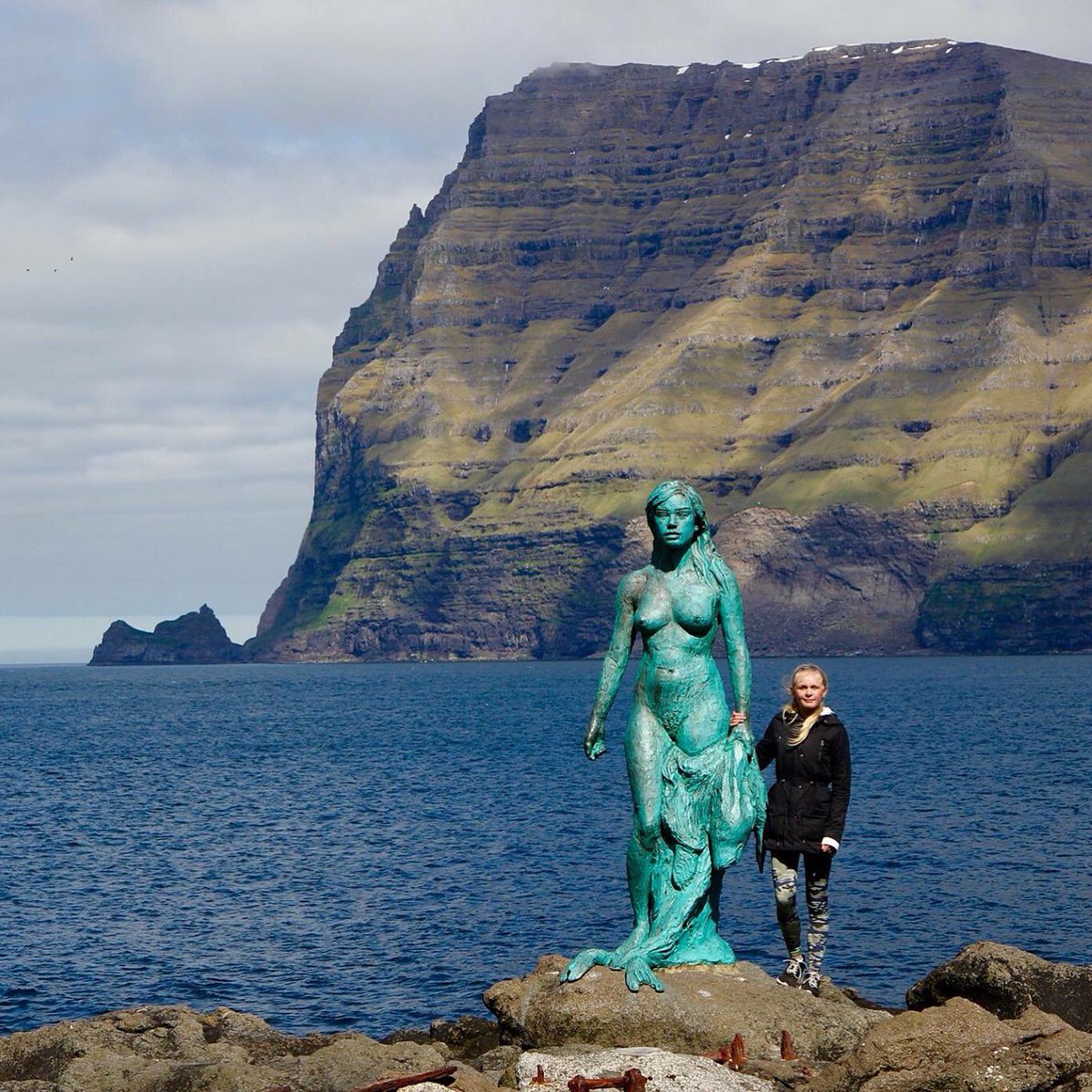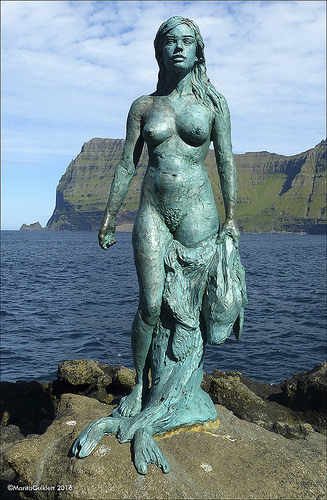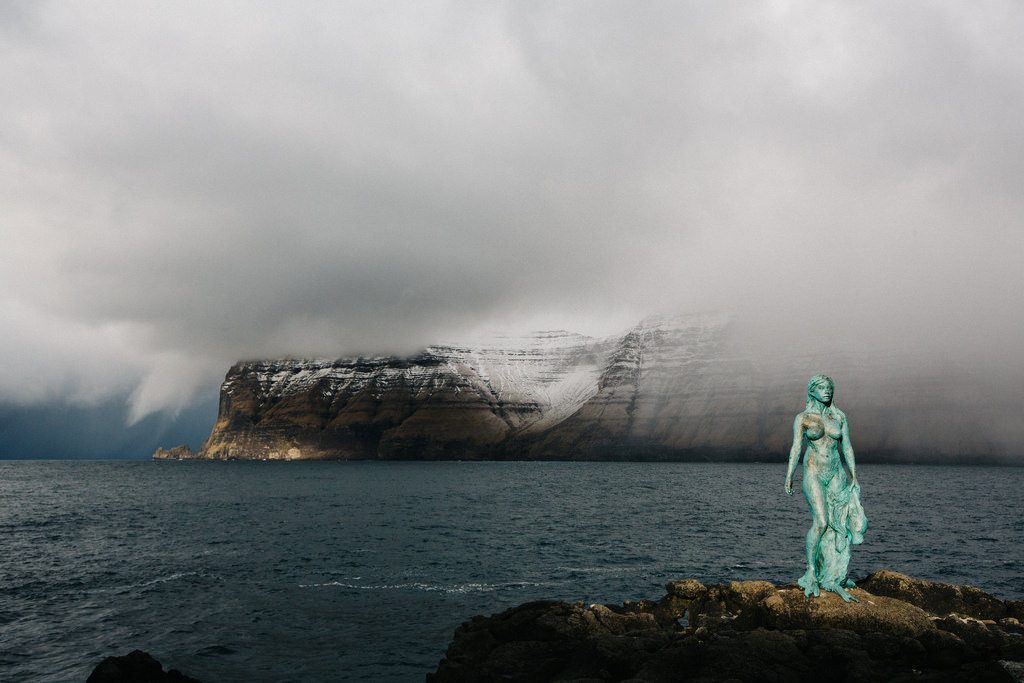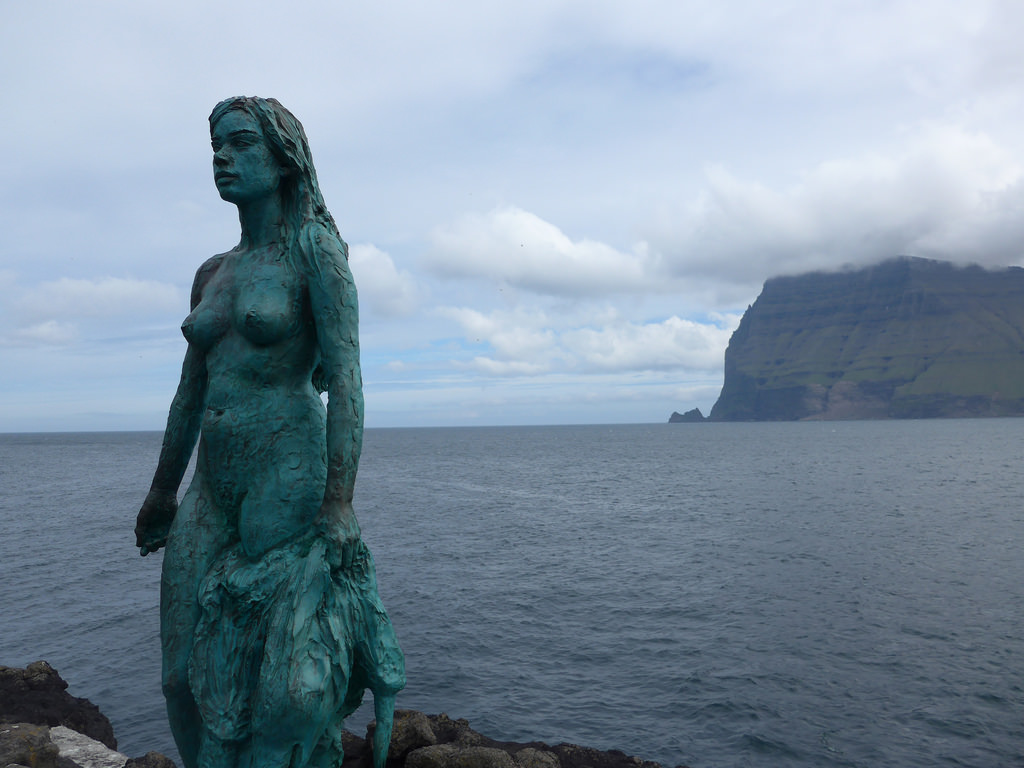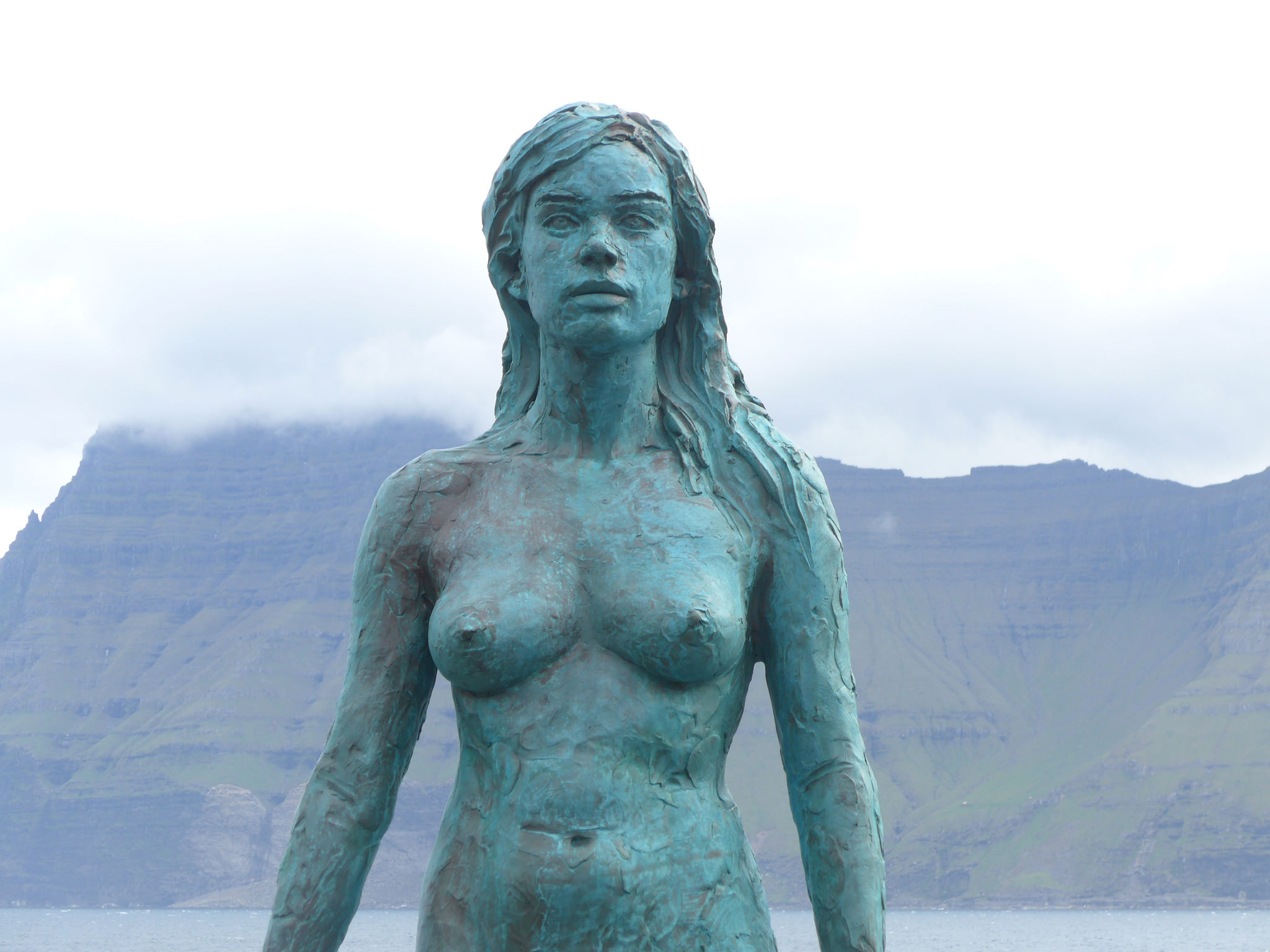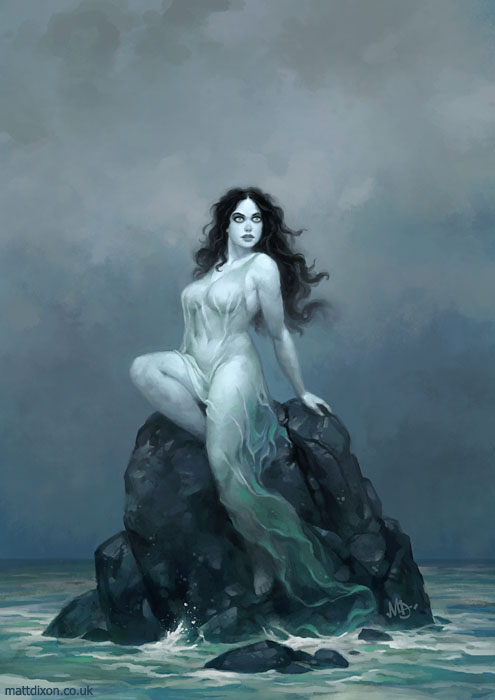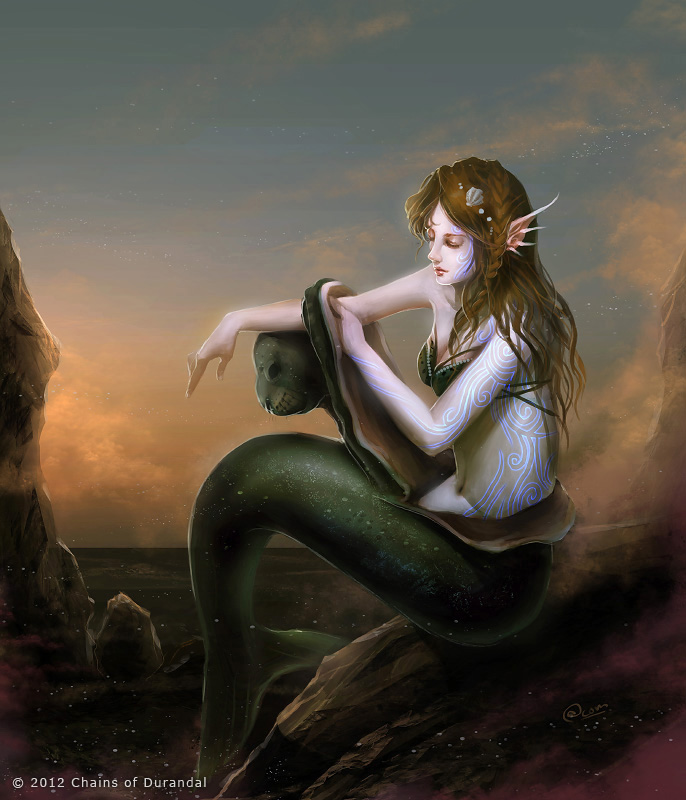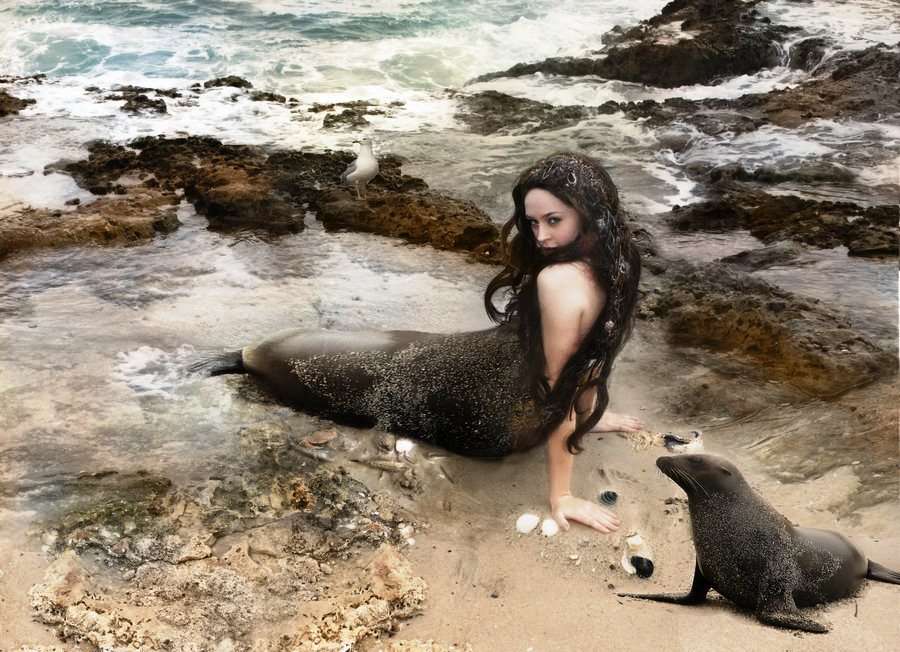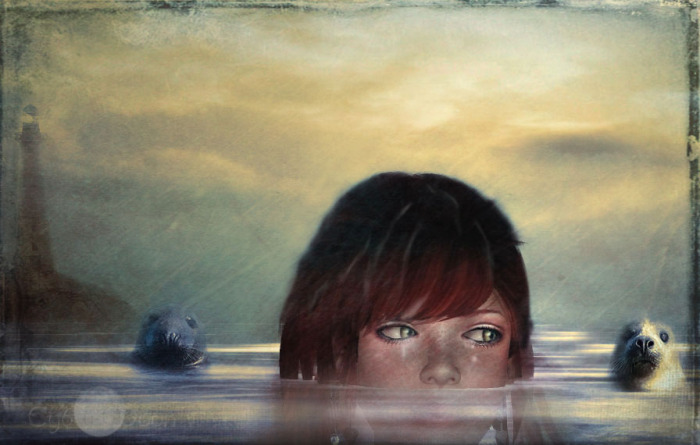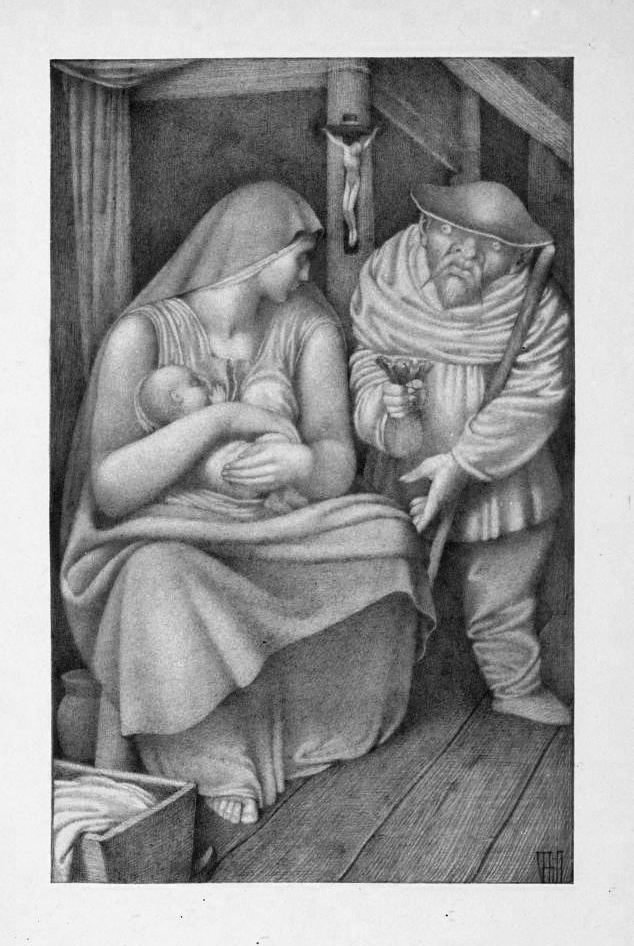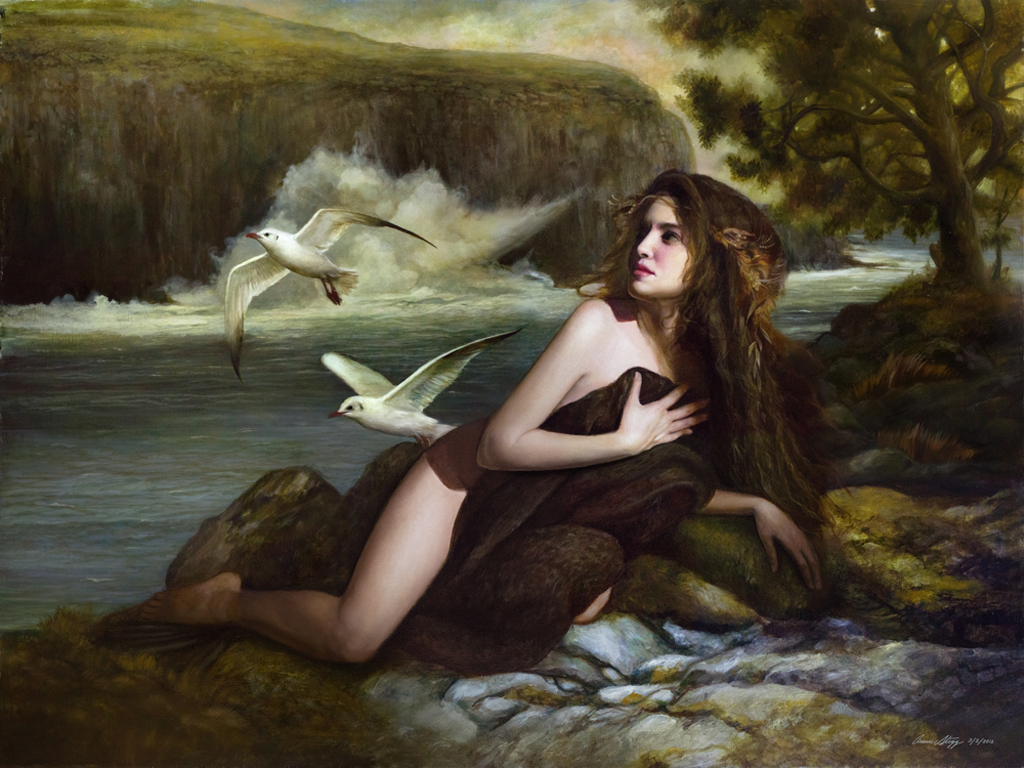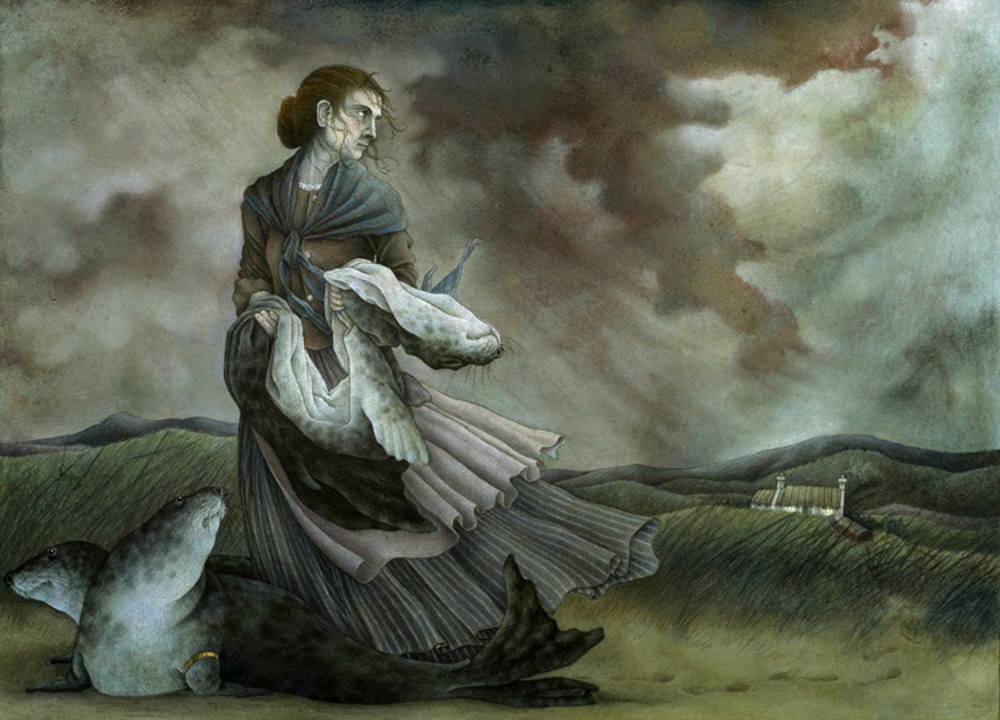|
Selkies |
|||||
| The Seal Woman of Mikladalur Faroe Islands
Kópakonan – The Seal Woman
COPYRIGHT© 2016 VISIT FAROE ISLANDS.ALL RIGHTS RESERVED. The legend of Kópakonan, literally meaning “the Seal Woman”, is one of the best-known folktales in the Faroe Islands. Seals were believed to be former human beings who voluntarily sought death in the ocean. Once a year, on the Thirteenth night, they were allowed to come on land, strip off their skins and amuse themselves as human beings, dancing and enjoying themselves. A young farmer from the village of Mikladalur on the northern island of Kalsoy, wondering if this story was true, went and lay in wait on the beach one Thirteenth evening. He watched and saw the seals arriving in large numbers, swimming towards the shore. They clambered on to the beach, shed their skins and laid them carefully on the rocks. Divested of their skins, they looked just like normal people. The young lad stared at a pretty seal girl placing her skin close to the spot where he was hiding, and when the dance began, he sneaked up and stole it. The dancing and games went on all night, but as soon as the sun started to peep above the horizon, all the seals came to reclaim their skins to return to the sea. The seal girl was very upset when she couldn’t find her skin, though its smell still lingered in the air, and then the man from Mikladalur appeared holding it, but he wouldn’t give it back to her, despite her desperate entreaties, so she was obliged to accompany him to his farm. He kept her with him for many years as his wife, and she bore him several children; but he always had to make sure that she didn’t have access to her skin. He kept it locked up in a chest to which he alone had the key, a key which he kept at all times on a chain attached to his belt. Disapperance One day, while he was out at sea fishing with his companions, he realised he had left the key at home. He announced to his companions, ‘Today I shall lose my wife!’ – and he explained what had happened. The men pulled in their nets and lines and rowed back to the shore as fast as they could, but when they arrived at the farm, they found the children all alone and their mother gone. Their father knew she wasn’t going to come back, as she had put out the fire and put away all the knives, so that the young ones couldn’t do themselves any harm after she’d left. Indeed, once she had reached the shore, she had put on her sealskin and plunged into the water, where a bull seal, who had loved her all those years before and was still waiting for her, popped up beside her. When her children, the ones she had had with the Mikladalur man, later came down to the beach, a seal would emerge and look towards the land; people naturally believed that it was the children’s mother. And so the years passed.
A statue of the Seal Woman was raised in Mikladalur on the island of
Kalsoy on 1 August, 2014.
The statue is 2.6 metres long, weighs 450 kilograms, and is made of bronze and stainless steel. Photo by Dylan Furst SOURCE and rest of story: VISIT FAROE ISLANDS
Then one day it happened that the Mikladalur men planned to go deep into one of the caverns along the far coast to hunt the seals that lived there. The night before they were due to go, the man’s seal wife appeared to him in a dream and said that if he went on the seal hunt in the cavern, he should make sure he didn’t kill the great bull seal that would be lying at the entrance, for that was her husband. Nor should he harm the two seal pups deep inside the cave, for they were her two young sons, and she described their skins so he would know them. But the farmer didn’t heed the dream message. He joined the others on the hunt, and they killed all the seals they could lay their hands on. When they got back home, the catch was divided up, and for his share the farmer received the large bull seal and both the front and the hind flippers of the two young pups. Hand of Hárek and foot of FredrikIn the evening, when the head of the large seal and the limbs of the small ones had been cooked for dinner, there was a great crash in the smoke-room, and the seal woman appeared in the form of a terrifying troll; she sniffed at the food in the troughs and cried the curse: ‘Here lie the head of my husband with his broad nostrils, the hand of Hárek and the foot of Fredrik! Now there shall be revenge, revenge on the men of Mikladalur, and some will die at sea and others fall from the mountain tops, until there be as many dead as can link hands all round the shores of the isle of Kalsoy!’ When she had pronounced these words, she vanished with a great crash of thunder and was never seen again. But still today, alas, it so happens from time to time that men from the village of Mikladalur get drowned at sea or fall from the tops of cliffs; it must therefore be feared that the number of victims is not yet great enough for all the dead to link hands around the whole perimeter of the isle of Kalsoy. SOURCE and rest of story: VISIT FAROE ISLANDS
|
|||||
|
|||||
Selkies
Selkies are said to be fictional creatures that live in Faroese, Icelandic, Irish, and Scottish Mythology.
They can shed their skin form seals to become humans which are usually
woman. The legend is originated on the island of Orkney and the
Shetland Islands. The Silkies have many different names.This can be
Selchies; Silkies or Selch. is some of the Scots word for the
seal/selkie from the old English seolh.
Legends The legends of the Silkier has been around for centuries, especially in the Icelandic, Ireland and Scotland countries. These of course were the oceans of the very icy seas.The Selkies of these icy seas are able to become human by shedding their seal skins and can then return to the seal form by putting them back on. Ancient stories concerning the selkies are generally romantic tragedies. Sometimes the human[mostly always men] will not know that their lover is a selkie and wakes to find them gone.Other times the human male will hide the selkie skin which is almost always of a Female selkie, thus preventing her to return to the seal form. A selkie can only make contact with one particular human for a short amount of time before they must reture to the sea/ocean. They are not able to make contactt with that human again for seven years, unless the human has steal their selkie skin and hidden it or even worst of all ''burned it' If they have burned the selkie seal skin they may never go back to the ocean again where they probably have a husband and children and a entire family that they will never see again. And the longing for the sea will forever be there but she will never be able to be again. There are a few such stories in ballad; called the Great Silkie or Sule Skerry and the movie Dragons Faeries Elves & the Unseen
Neil Mac Coddrum
There is one ancient Celtic story featuring Neil Mac Coddrum, a Scottish fisherman. He was traveling along the coast when he spotted a group of nude women dancing under the moon. When he stepped on a piece of driftwood, he alerted his presence to the women who ran over to a pile of furs, slipped them on and dove into the sea. However, Neil Mac Coddrum was able to grab the last sister’s sealskin before she could put it on. Although she pleaded with him to give it back to her, Neil knew about selkies from the old tales and he refused. He hid her sealskin and the woman was forced to stay with him and become his wife. After some
time, she gave Neil a son and a daughter, both sporting webs between
their fingers and toes. They grew older as the selkie woman grew more
wistful, though she was a good and obedient wife. One day, the children
came running to her with a piece of fur, excited to show her what they
had found. Their mother was overjoyed to have her sealskin back. She
told her children about the Selkie race and then warned them that she
had to leave them that very night. SOURCE: Celtic Wedding Rings |
|||||
Selkie by Dune Mouse
The Great Silkie of Sule SkerryThe
Great Silkie of Sule Skerry or The Grey Selkie of Suleskerry is a
traditional folk song from Orkney. The song was collected by the
American scholar, Francis James Child in the late nineteenth century
and is listed as Child ballad number 113. There are many different
versions of the song, one of which is a part of the epic ballad, The
Lady Odivere.
A woman, nursing a baby, laments that she does not know the child's father or where he lives. A man rises up to tell her that he is the father, and that he is a silkie — a changeling that takes the form of a man on the land and a seal in the sea, and that he lives on a remote rocky island called Sule Skerry. He gives her a purse full of gold, takes his son, and predicts that she will marry a gunner (the man who fires the harpoon on a whaling ship) who will shoot both him and their son. Lyrics
from 1912 book Ballads Weird and Wonderful by Richard Chope. |
|||||
Selkie by Annie Stegg
|
|||||
Related Links:
|
|||||
| FAIR USE NOTICE: This page contains copyrighted material the use of which has not been specifically authorized by the copyright owner. Pegasus Research Consortium distributes this material without profit to those who have expressed a prior interest in receiving the included information for research and educational purposes. We believe this constitutes a fair use of any such copyrighted material as provided for in 17 U.S.C § 107. If you wish to use copyrighted material from this site for purposes of your own that go beyond fair use, you must obtain permission from the copyright owner. | |||||
|
|


